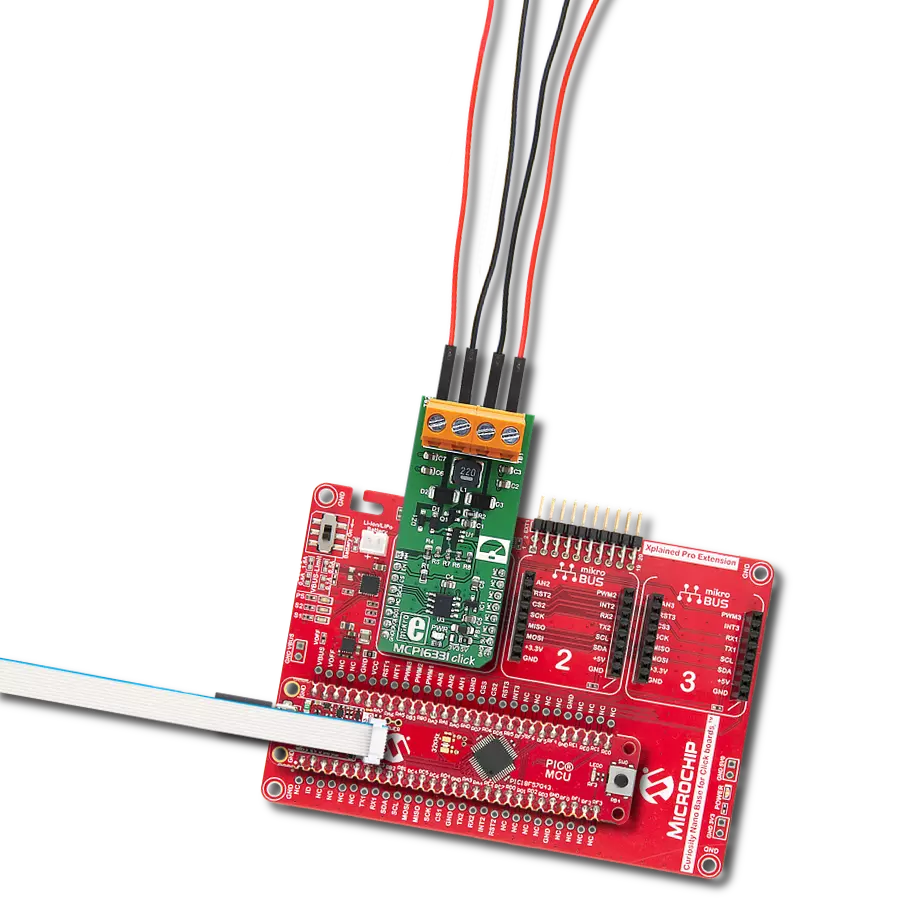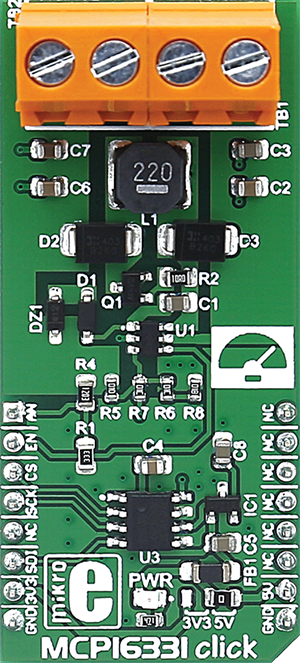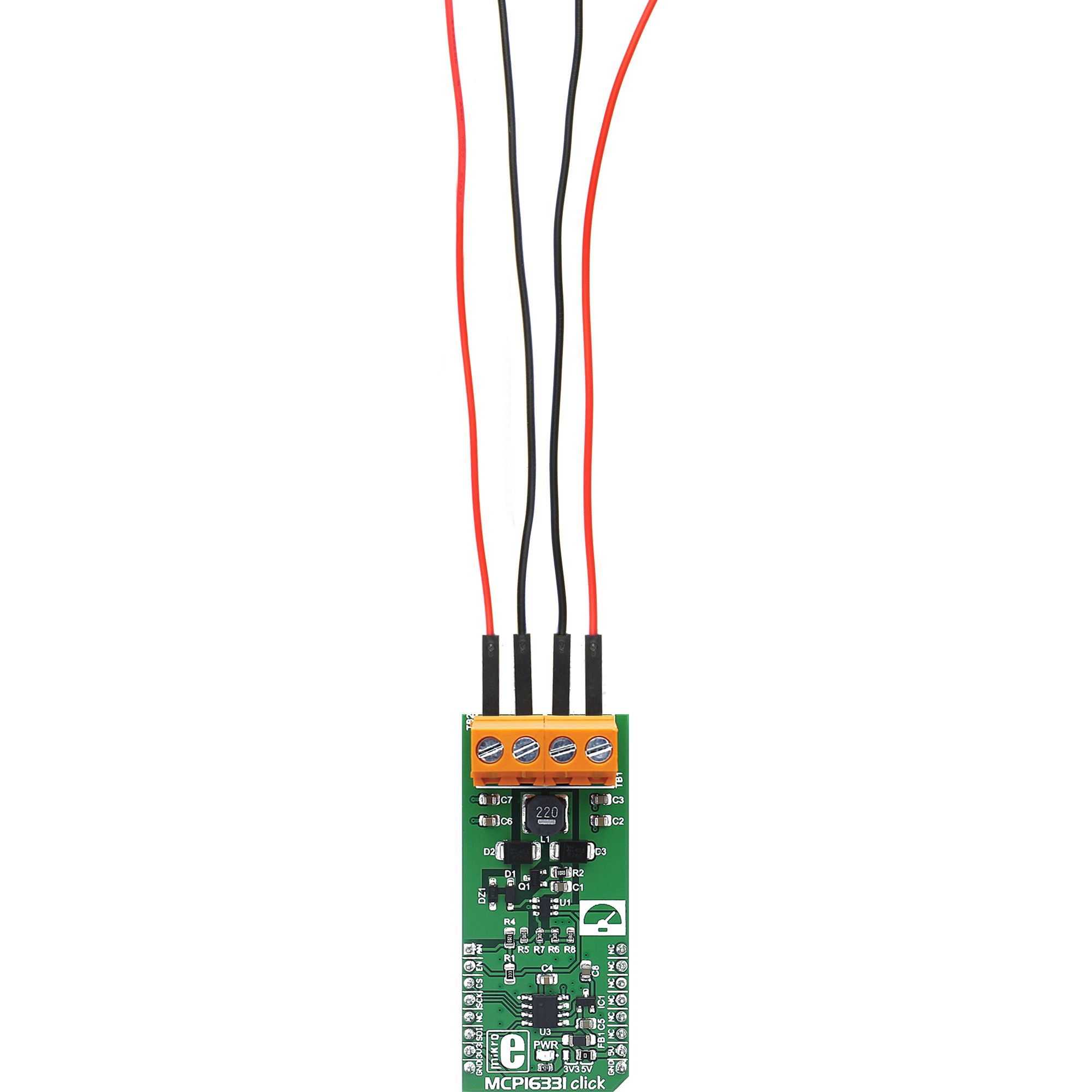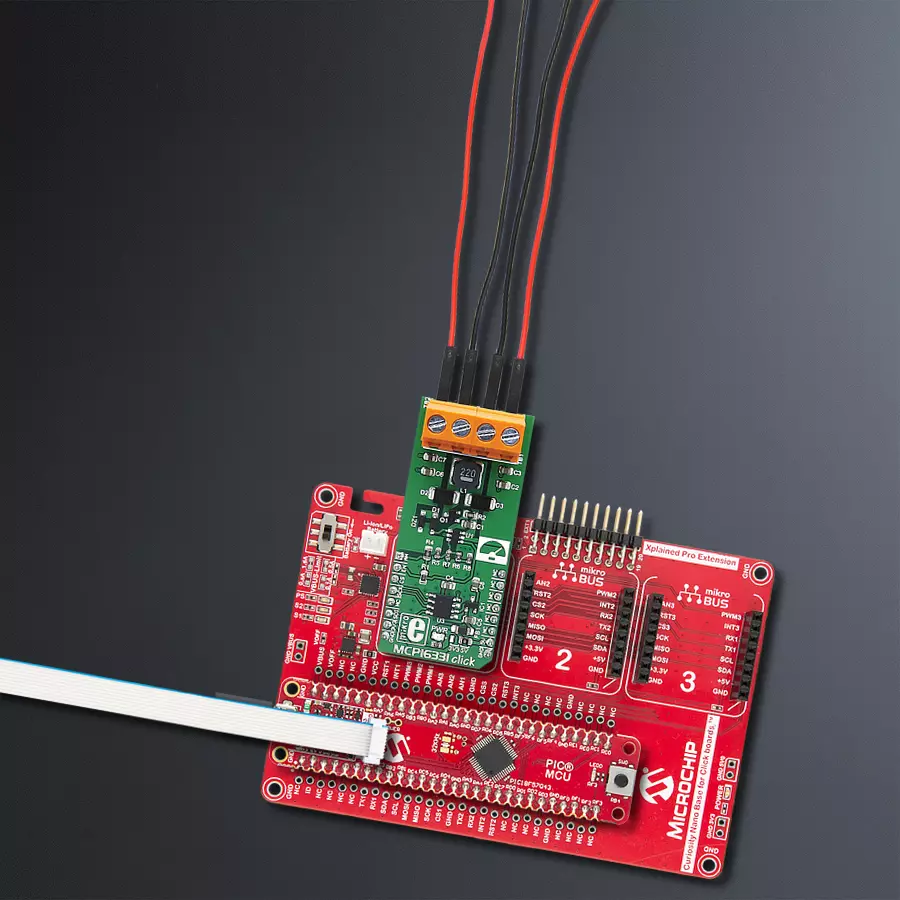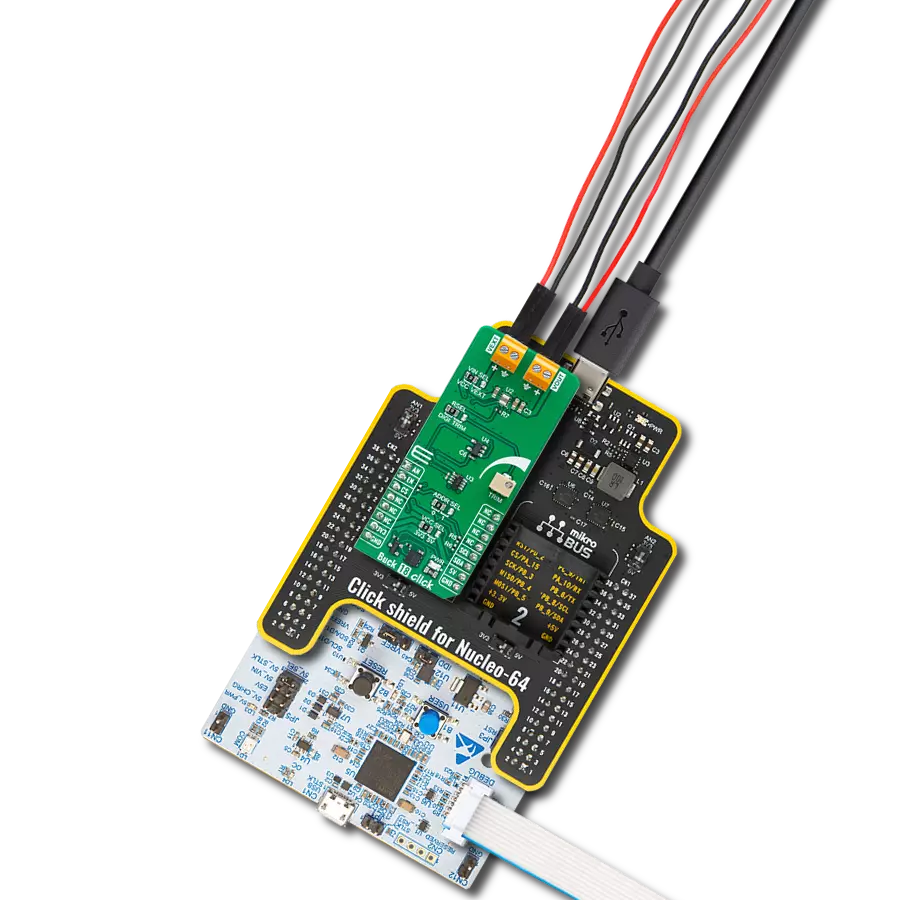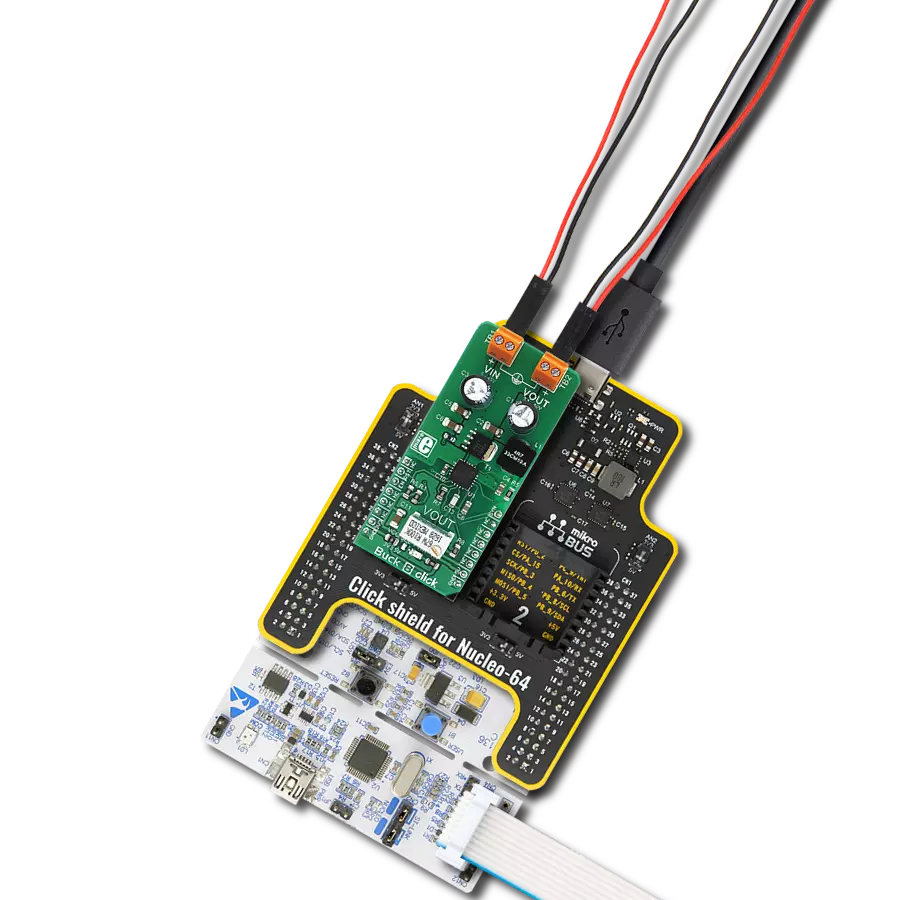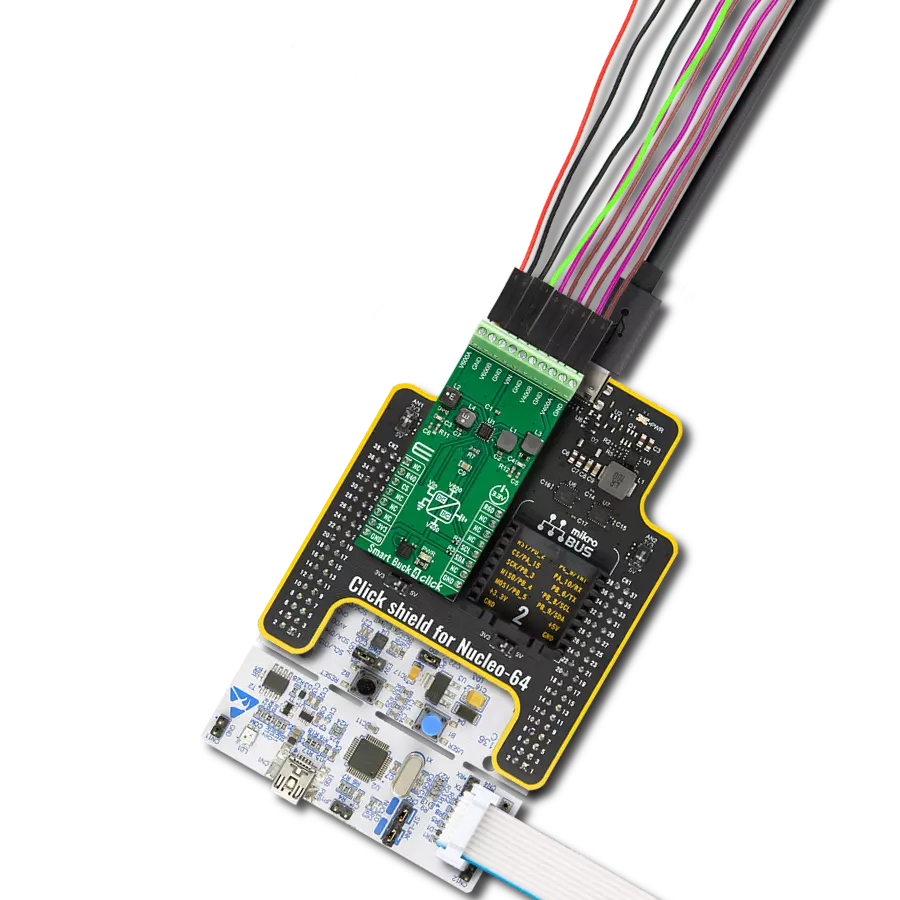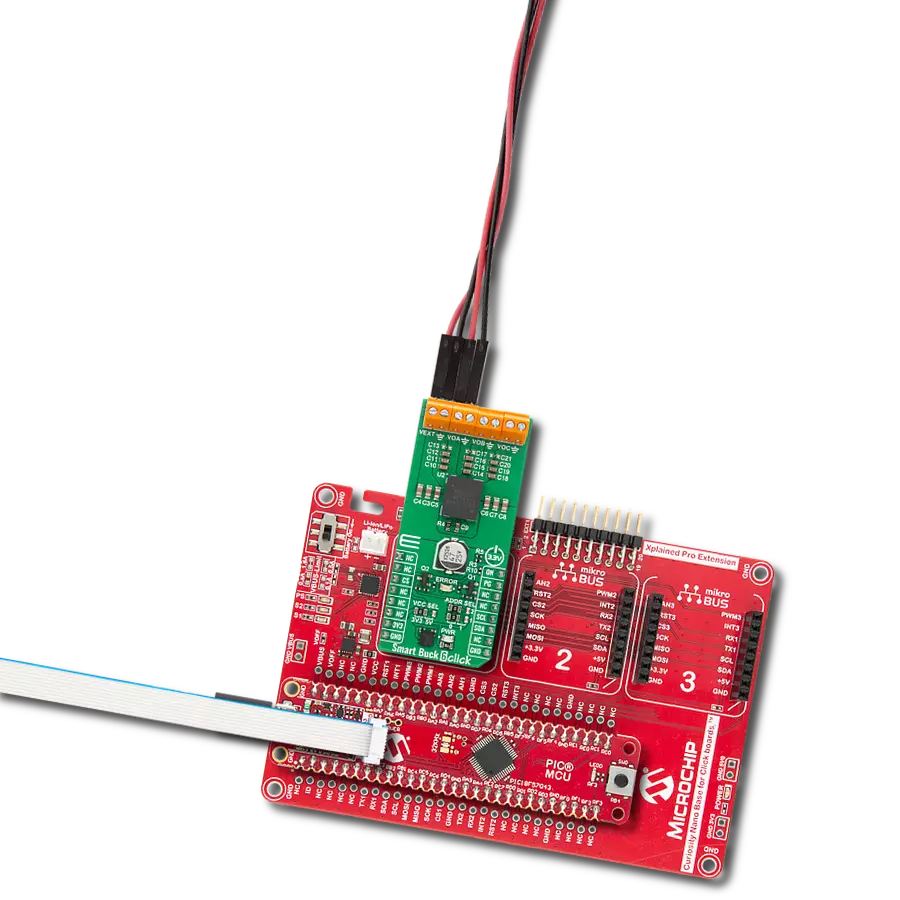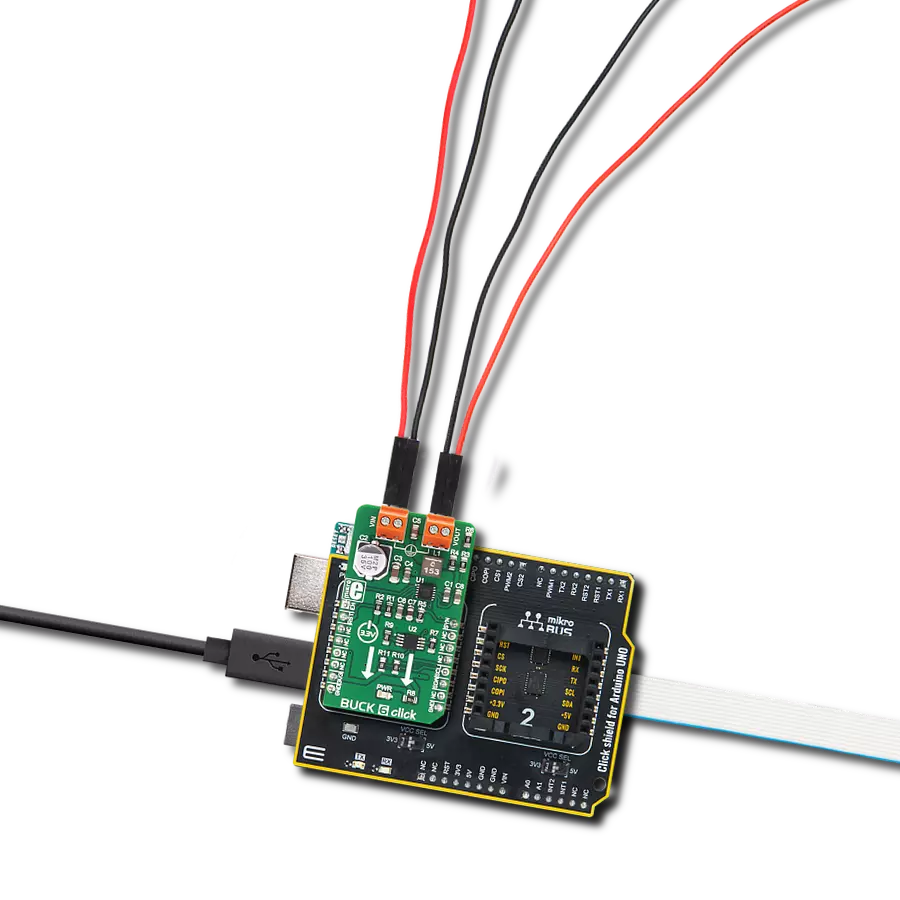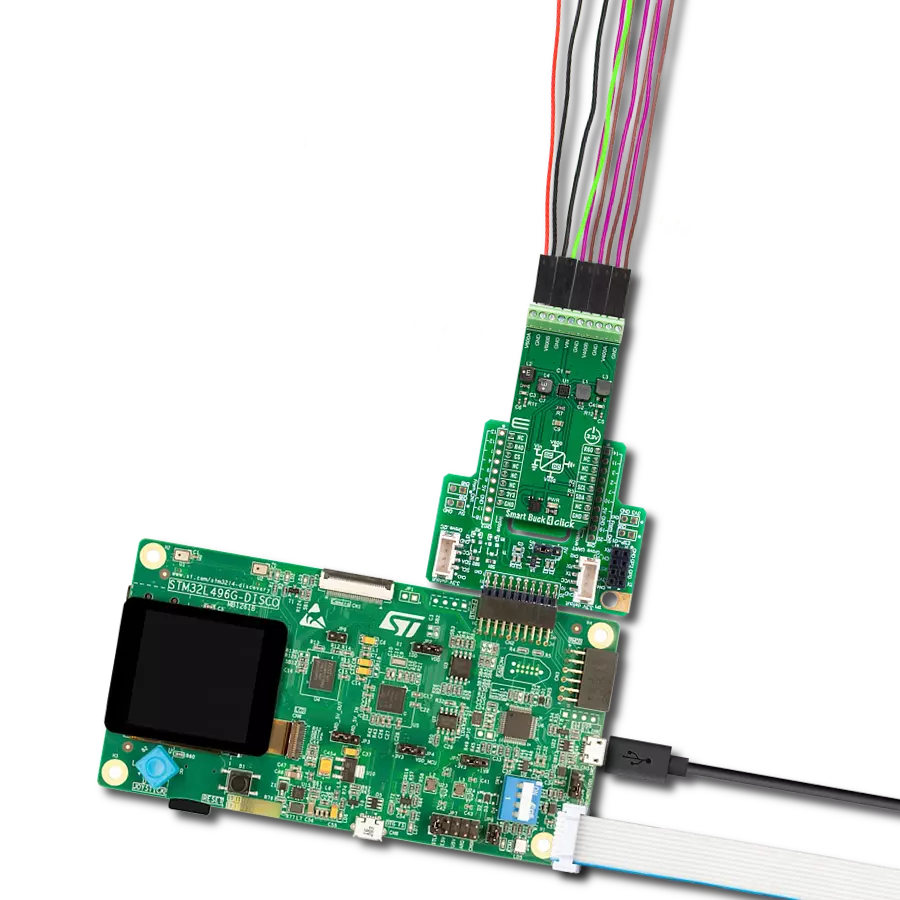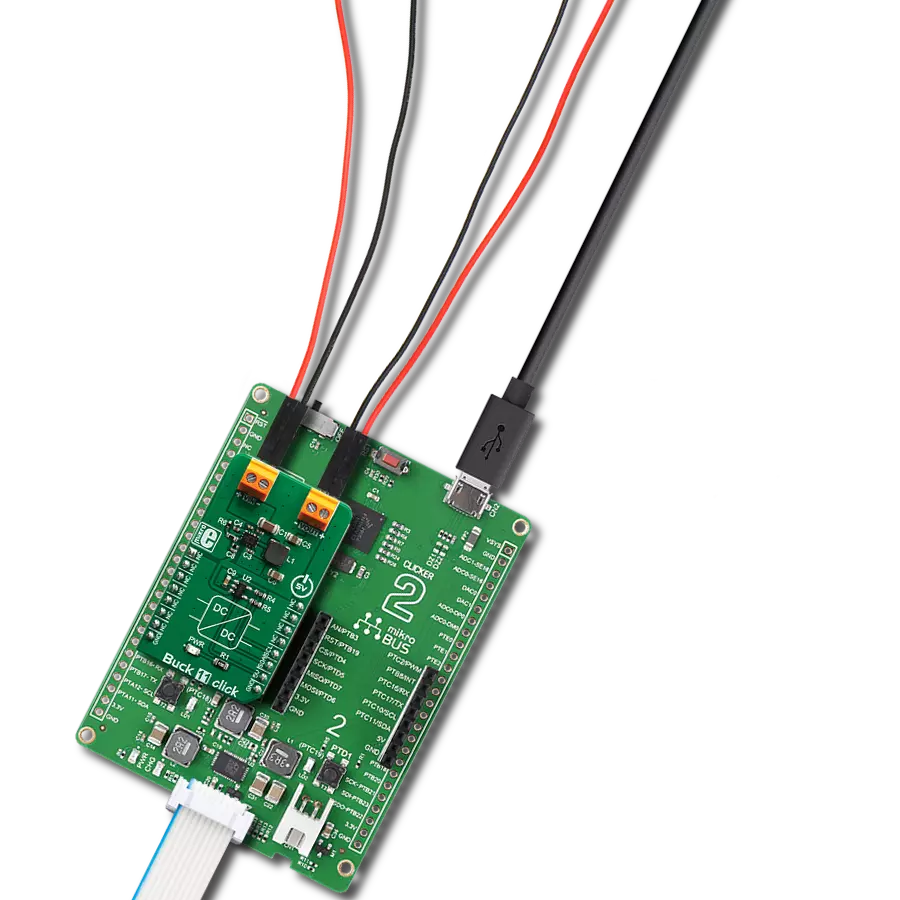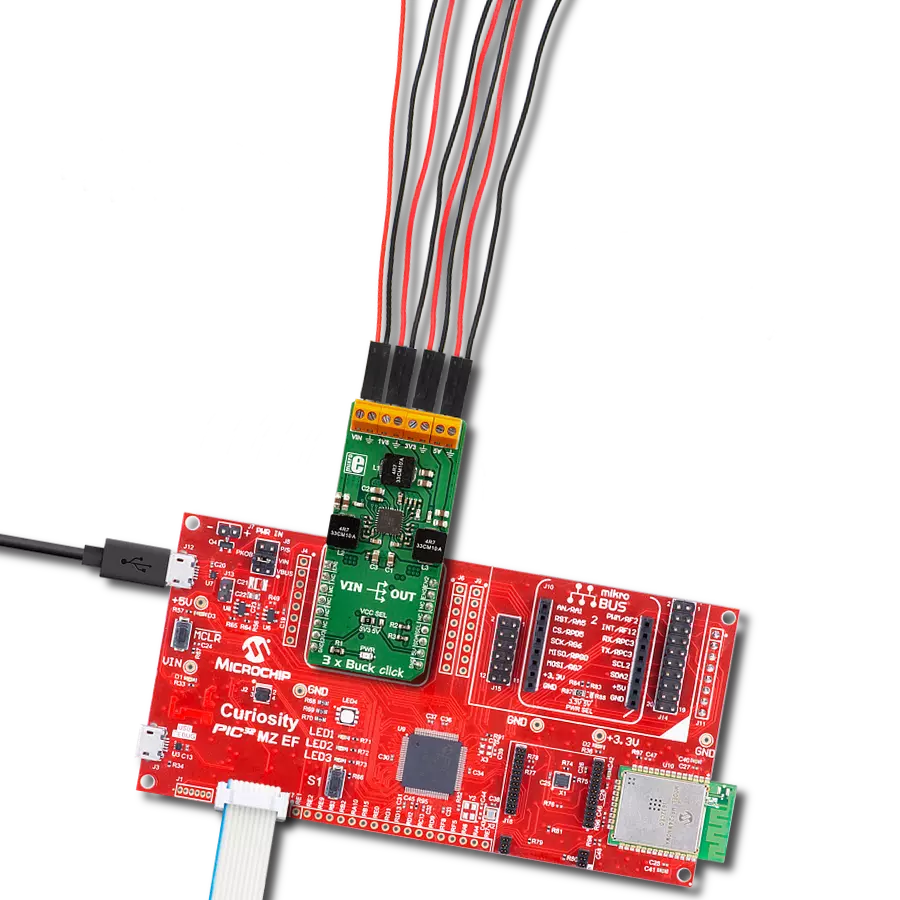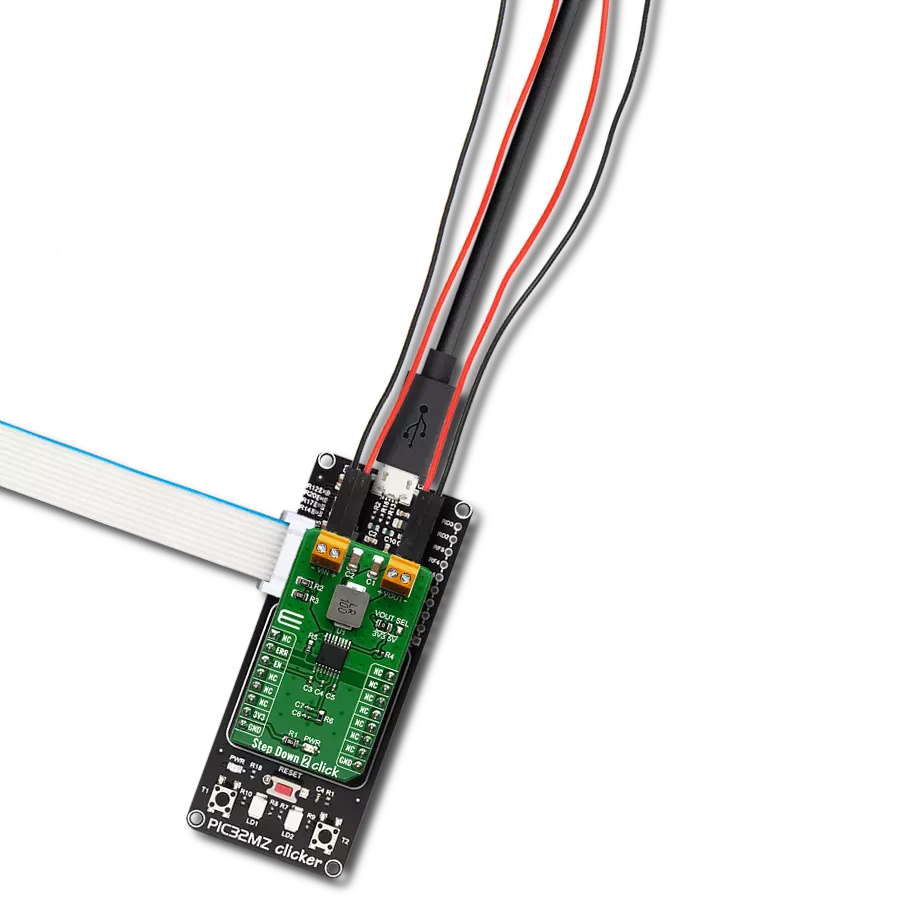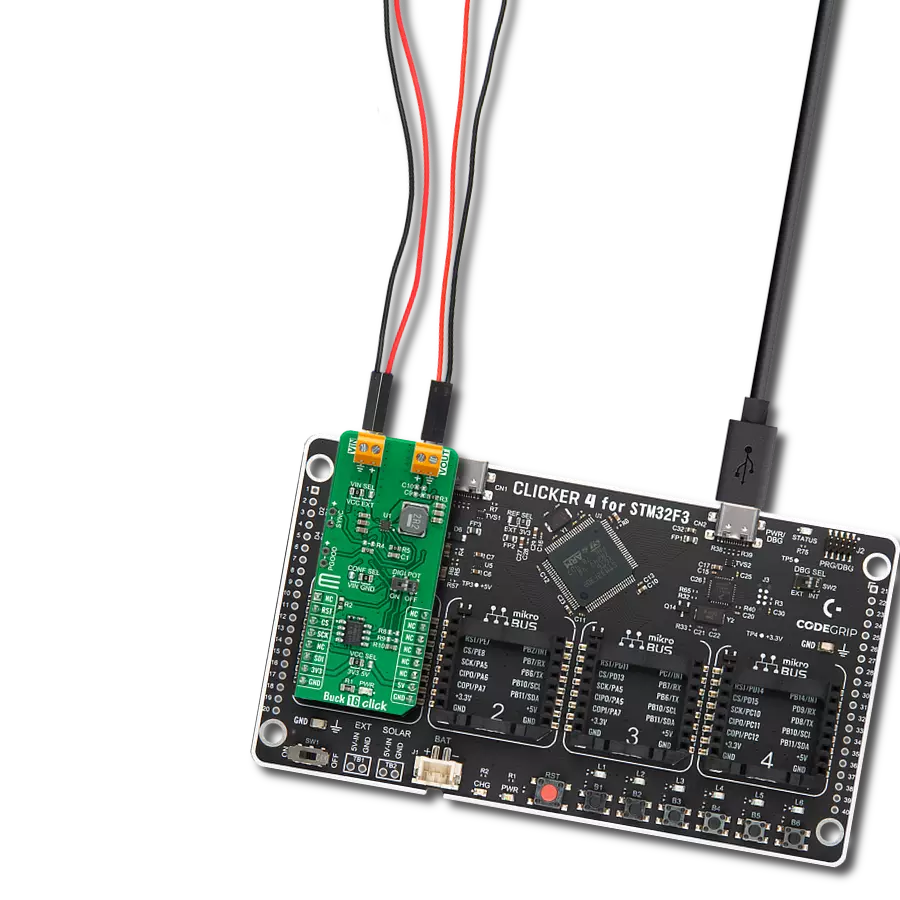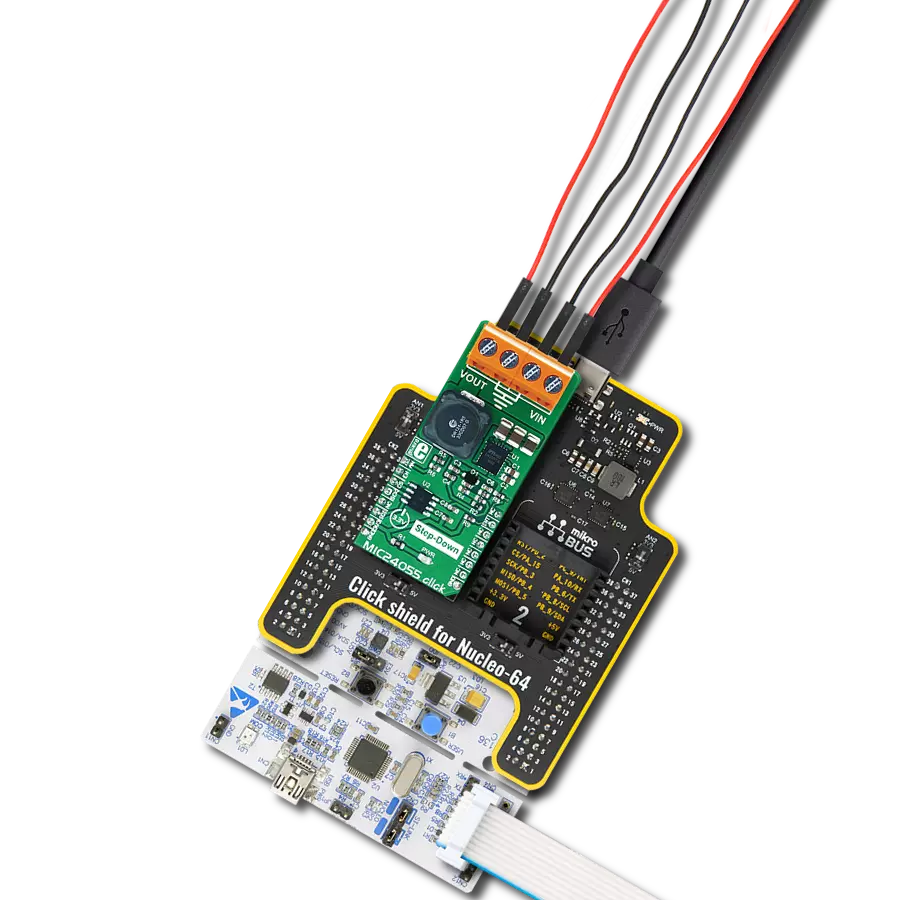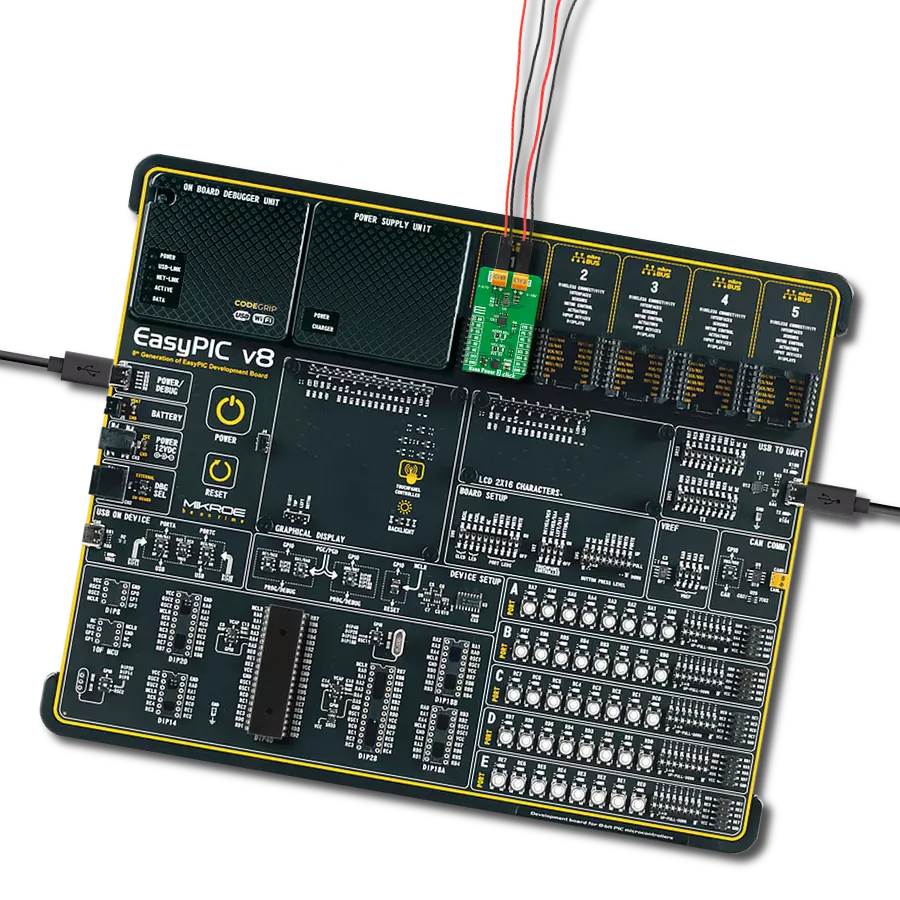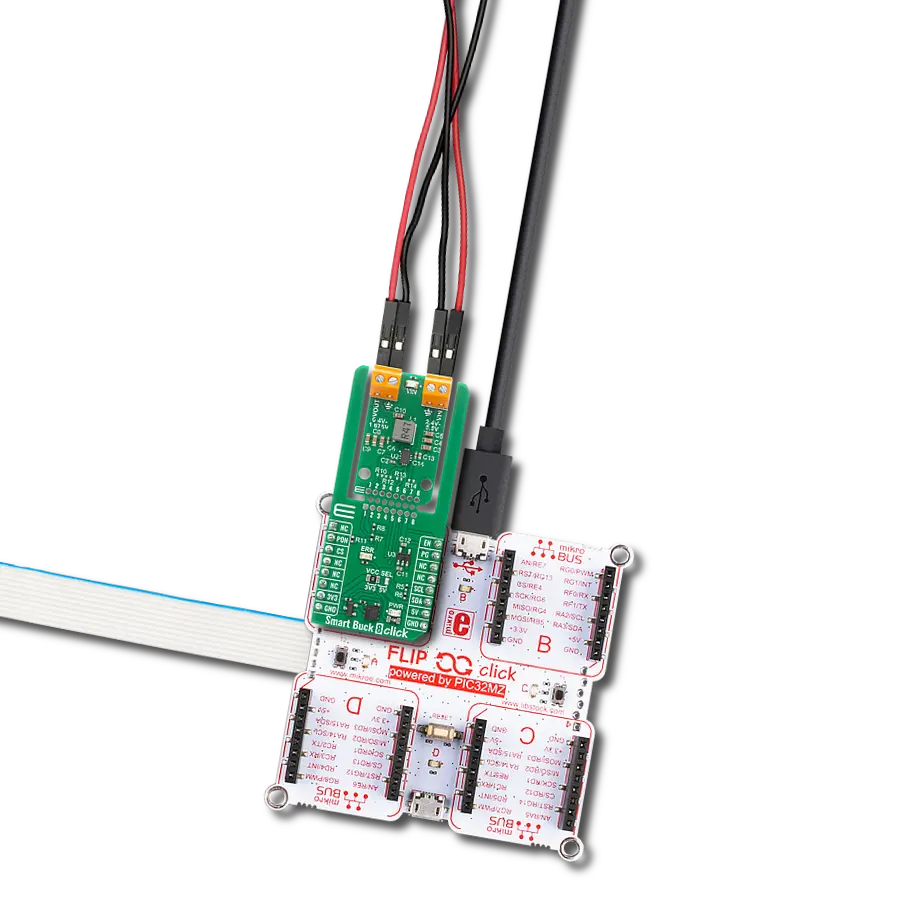This high-efficiency buck regulator stands as a beacon of power management, delivering superior voltage conversion while minimizing energy losses
A
A
Hardware Overview
How does it work?
MCP16331 Click is based on the MCP16331, a non-synchronous, step-down converter from Microchip capable of stepping input voltages ranging from 4.4V to 50V and output voltage ranging from 2.0V to 24V. More details about the MCP16331 are available in the official datasheet. However, the MCP16331 click is designed to handle an input voltage ranging from 4.5V to 18V and output a voltage ranging from 2,25V to 12V at 500 mA maximum current since it works in a buck-boost topology. To set the output voltage of the MCP16331 click, the MCP4921 - a low-power 12-Bit dual voltage output DAC is used in the feedback loop. The output of this DAC is used to drive the FB pin of the MCP16331, so to set up the output voltage, it is enough to set the DAC output to a specific value. This will cause the FB pin to drive
the switching section of the MCP16331, which will output a desired voltage level as a result. The AN pin of the mikroBUS™ can be used to verify the output voltage and correct the value given to the DAC if needed. The MCP4291 DAC can be configured by the host MCU via the SPI bus pins, routed to the mikroBUS™. The AN pin of the mikroBUS™ is routed to a middle point of a voltage divider on the output. This voltage divider is used to scale down the output voltage so the ADC of the host MCU can successfully convert it. Besides the bit depth of the ADC, this should also be considered when calculating the output voltage value. The MCP16331 click has two screw terminals used to connect the input voltage and the load, and the SMD jumper is used to select the voltage for the DAC IC. This affects the SPI logic
voltage levels, so both 3.3V and 5V MCUs can be used with this Click board™. This sequence is because the enable pin (EN) of the MCP16331 has an internal pull-up resistor that keeps the MCP16331 output stage enabled even if the pin is left unconnected. At power-up, before you set the voltage via SPI, DAC output is unspecified, and the output voltage may be set higher than what your load supports. This Click board™ can operate with either 3.3V or 5V logic voltage levels selected via an onboard jumper. This way, both 3.3V and 5V capable MCUs can use the communication lines properly. Also, this Click board™ comes equipped with a library containing easy-to-use functions and an example code that can be used, as a reference, for further development.
Features overview
Development board
PIC18F57Q43 Curiosity Nano evaluation kit is a cutting-edge hardware platform designed to evaluate microcontrollers within the PIC18-Q43 family. Central to its design is the inclusion of the powerful PIC18F57Q43 microcontroller (MCU), offering advanced functionalities and robust performance. Key features of this evaluation kit include a yellow user LED and a responsive
mechanical user switch, providing seamless interaction and testing. The provision for a 32.768kHz crystal footprint ensures precision timing capabilities. With an onboard debugger boasting a green power and status LED, programming and debugging become intuitive and efficient. Further enhancing its utility is the Virtual serial port (CDC) and a debug GPIO channel (DGI
GPIO), offering extensive connectivity options. Powered via USB, this kit boasts an adjustable target voltage feature facilitated by the MIC5353 LDO regulator, ensuring stable operation with an output voltage ranging from 1.8V to 5.1V, with a maximum output current of 500mA, subject to ambient temperature and voltage constraints.
Microcontroller Overview
MCU Card / MCU

Architecture
PIC
MCU Memory (KB)
128
Silicon Vendor
Microchip
Pin count
48
RAM (Bytes)
8196
You complete me!
Accessories
Curiosity Nano Base for Click boards is a versatile hardware extension platform created to streamline the integration between Curiosity Nano kits and extension boards, tailored explicitly for the mikroBUS™-standardized Click boards and Xplained Pro extension boards. This innovative base board (shield) offers seamless connectivity and expansion possibilities, simplifying experimentation and development. Key features include USB power compatibility from the Curiosity Nano kit, alongside an alternative external power input option for enhanced flexibility. The onboard Li-Ion/LiPo charger and management circuit ensure smooth operation for battery-powered applications, simplifying usage and management. Moreover, the base incorporates a fixed 3.3V PSU dedicated to target and mikroBUS™ power rails, alongside a fixed 5.0V boost converter catering to 5V power rails of mikroBUS™ sockets, providing stable power delivery for various connected devices.
Used MCU Pins
mikroBUS™ mapper
Take a closer look
Click board™ Schematic

Step by step
Project assembly
Software Support
Library Description
This library contains API for MCP16331 Click driver.
Key functions:
mcp16331_set_vout- This function sets the output voltage value
Open Source
Code example
The complete application code and a ready-to-use project are available through the NECTO Studio Package Manager for direct installation in the NECTO Studio. The application code can also be found on the MIKROE GitHub account.
/*!
* \file
* \brief Mcp16331 Click example
*
* # Description
* This application is buck-boost voltage regulator.
*
* The demo application is composed of two sections :
*
* ## Application Init
* Sends hal pointers, and initializes Click
*
* ## Application Task
* Switches between 5 V and 12 V values
*
* \author MikroE Team
*
*/
// ------------------------------------------------------------------- INCLUDES
#include "board.h"
#include "log.h"
#include "mcp16331.h"
// ------------------------------------------------------------------ VARIABLES
static mcp16331_t mcp16331;
static log_t logger;
// ------------------------------------------------------ APPLICATION FUNCTIONS
void application_init ( void )
{
log_cfg_t log_cfg;
mcp16331_cfg_t cfg;
/**
* Logger initialization.
* Default baud rate: 115200
* Default log level: LOG_LEVEL_DEBUG
* @note If USB_UART_RX and USB_UART_TX
* are defined as HAL_PIN_NC, you will
* need to define them manually for log to work.
* See @b LOG_MAP_USB_UART macro definition for detailed explanation.
*/
LOG_MAP_USB_UART( log_cfg );
log_init( &logger, &log_cfg );
log_info( &logger, "---- Application Init ----" );
// Click initialization.
mcp16331_cfg_setup( &cfg );
MCP16331_MAP_MIKROBUS( cfg, MIKROBUS_1 );
mcp16331_init( &mcp16331, &cfg );
}
void application_task ( void )
{
mcp16331_set_vout( &mcp16331, 5000 );
Delay_ms ( 1000 );
Delay_ms ( 1000 );
Delay_ms ( 1000 );
mcp16331_set_vout( &mcp16331, 12000 );
Delay_ms ( 1000 );
Delay_ms ( 1000 );
Delay_ms ( 1000 );
}
int main ( void )
{
/* Do not remove this line or clock might not be set correctly. */
#ifdef PREINIT_SUPPORTED
preinit();
#endif
application_init( );
for ( ; ; )
{
application_task( );
}
return 0;
}
// ------------------------------------------------------------------------ END
Additional Support
Resources
Category:Buck
